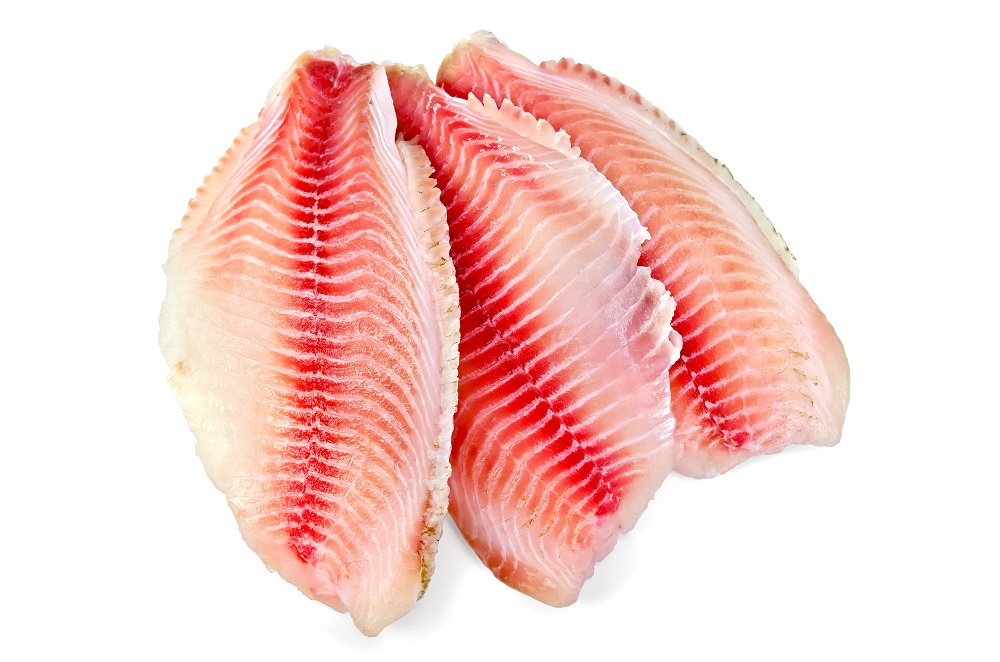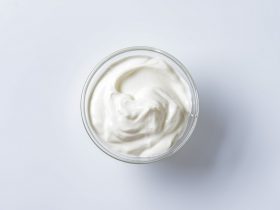Various guidelines recommend pregnant women to eat a variety of seafood to achieve the full range of nutrients needed for fetal growth and development. However, there may be concerns regarding the safety of fish for consumption because of the food borne illnesses they can cause and the mercury they contain. With so many different types of fish, it can be hard to choose which ones are fit for pregnant women to eat.
Tilapia is considered as one of the best choices for fish consumption during pregnancy. It is safe to eat by pregnant women, as long as it has been thoroughly cooked. It has a low mercury content and is a rich source of essential nutrients needed by a developing baby.
This article will discuss the benefits of seafood intake during pregnancy. Next, it will talk about the risks of mercury exposure from maternal fish intake. It will also describe what tilapia is. Finally, it will explain how tilapia can be safely eaten by pregnant women and which tilapia dishes are best for them to avoid.
Seafood Benefits During Pregnancy
Seafood is an excellent source of high quality protein, amino acids, fiber, omega-3 fatty acids, vitamins and minerals (Hosomi et al., 2012). The U.S. Food and Drug Administration (FDA), the Environmental Protection Agency (EPA), and the 2015-2020 Dietary Guidelines for Americans (DGA) all agree with the recommendation that pregnant women should eat at least 8 ounces and up to 12 ounces (or 2 to 3 servings) per week of a variety of seafood that are lower in mercury content.
According to the US FDA, seafood in the diet of pregnant women is important as it provides the following:
- Protein
- Healthy omega-3 fatty acids DHA and EPA
- More vitamin B12 and vitamin D than any other type of food
- Iron, which is important for infants, young children, and women who are pregnant
- Other minerals like selenium, zinc and iodine
Most fish are also low in fat, and majority of the fat present in fish is healthy polyunsaturated fat. Fish is a natural source of many B vitamins, including B12, while oily fish provide vitamins A and D. Studies have shown that pregnant women benefit from fish intake and are important for their children’s growth and development (US FDA, n.d.).
The benefits of seafood consumption have mainly been linked to its omega-3 PUFA content (Hosomi et al., 2012). The most biologically active forms of omega-3 fatty acids are docosahexaenoic acid (DHA) and eicosapentaenoic acid (EPA), which are mainly derived from marine sources like seafood (Coletta et al., 2010). Marine organisms have been identified as the only food source that contains naturally high amounts of these fatty acids (Hosomi et al., 2012).
Both EPA and DHA improve fetal development when ingested during pregnancy (Jensen, 2006). Sufficient intake of omega-3 fatty acids is particularly important during pregnancy because they are critical building blocks of the fetal brain and retina (Coletta et al., 2010).
DHA is an especially important component of neural and retinal membranes. It accumulates rapidly in the brain and retina during the latter stage of gestation and early postnatal life. Hence, maternal intake of omega-3 fatty acids can have significant effects on subsequent infant visual function and neurodevelopmental status (Jensen, 2006).
A study by Hibbeln et al. in 2007 found that children who were born to mothers with lower seafood intake (less than 340 grams per week) had the greatest risk of suboptimal developmental outcomes:
- Testing in the lowest quartile for verbal and performance IQ at age 8 years
- Behavioral problems at age 7 years
- Poor scores on early development tests evaluating fine motor, social and communication skills
To facilitate optimum outcomes during pregnancy, as well as to improve fetal health, consensus guidelines supported by the World Association of Perinatal Medicine, the Early Nutrition Academy, and the Child Health Foundation have recommended that pregnant women consume at least 200 milligrams of DHA per day. Moreover, the consumption of omega-3 PUFAs during pregnancy decreases the risk of early preterm birth (Koletzko et al., 2008).
Pregnant women can achieve this goal by consuming at least 1 to 2 servings of seafood per week (Coletta et al., 2010). In contrast, omega-3 supplements do not provide protein, vitamins, or minerals. Pregnant women who are not eating fish would be missing out on the nutrients from fish that are beneficial for their and their fetus’s overall health (US FDA, n.d.).
Mercury Exposure from Seafood Intake
Almost all fish contain at least traces of mercury. Fish absorb mercury from the food that they eat. Mercury builds up more in some types of fish compared to others, especially in larger fish that eat other fish and those fish that live longer (US FDA, n.d.).
Some predatory fish accumulate the highest levels of mercury that can be toxic to a developing fetus (Wooltorton, 2002). Mercury is a potent neurotoxin, which causes axonal demyelination (Weir, 2001).
The epidemic of mercury poisoning from consumption of contaminated seafood that happened in Minamata Bay and Niigata in Japan in the 1950s and 1960s provided strong evidence of the neurotoxicity of mercury at high doses, which caused demyelination and delayed nerve conduction. The children of exposed women showed profound neurologic deficits, demonstrating the fetal nervous system’s susceptibility to the effects of mercury (Weir, 2001).
At present, the primary source of human exposure to mercury is through ingestion of seafood (Balshaw et al., 2007). Mercury crosses the placenta, hence fetal exposure correlates directly with maternal seafood consumption (Coletta et al., 2010). Children who have been exposed to mercury prenatally are found to exhibit mental retardation, deafness, blindness, dysphasia, microcephaly and cerebral palsy (Weir, 2001).
Therefore, public health agencies have set a limit of 0.1 microgram per kilogram body weight per day as the maximum dose of safe fetal exposure to mercury (Coletta et al., 2010). Health Canada has set their limit for total mercury content in commercial fish to 0.5 parts per million (ppm) (Wooltorton, 2002).
The amount of mercury found in fish cannot be reduced by cleaning or cooking, hence it is important to choose those fish that belong to the “Best Choices” list (US FDA, n.d.). Fish that are larger and live longer, like the predators swordfish, king mackerel, shark and tilefish, have higher tissue concentrations of mercury, compared to smaller, short-lived fish species. This is why pregnant women are advised to avoid consumption of these higher mercury-containing fish (Coletta et al., 2010).
Fresh and frozen tuna (but not canned tuna), swordfish, and shark can have a total mercury content from 0.5 to 1.5 ppm. Therefore, Health Canada recommends these species to be consumed no more than once per week for the general population, and once per month for children and women of childbearing age (Wooltorton, 2002).
Mercury levels reported in seafood are typically low (Balshaw et al., 2007). For women of childbearing age, the benefits of eating seafood outweigh the potential risks (Mozaffarian & Rimm, 2006). The FDA and EPA recommendation of consuming 2 to 3 servings of seafood per week does not appear to pose a risk of toxicity to the mother or the fetus (Coletta et al., 2010).
What is Tilapia?
Since 2002, tilapia has consistently been in the top 10 list of the most frequently consumed seafood in the United States. Since 2006, Americans have eaten over 1 pound of tilapia per person every year. It remains to be a popular fish product because of its flavor, versatility in preparation and competitive price.

Tilapia is a fresh water fish that feeds on algae. Majority of the tilapia sold in the United States and around the world are farm raised and belong to the following species:
- Blue tilapia (Oreochromis aureus)
- Mozambique or red tilapia (Oreochromis mossambicus)
- Nile or black tilapia (Oreochromis niloticus)
According to the Environmental Defense Fund (EDF), tilapia in the US are grown in closed tank systems, to prevent escapes and pollution. Tilapia sold in the US are imported from Latin America and Asia. They are not native in the US, so escapes should be managed or they could cause ecological damage.
The nutritional composition of tilapia in Bangladesh was evaluated by Islam et al. in 2021. Results showed that tilapia is a good source of protein, carbohydrate and fiber. Macro- and micronutrients detected were potassium, sodium, magnesium, calcium, iron, and manganese. Essential amino acids and PUFAs were also found.
Farzad et al. in 2019 also analyzed 12 commercial tilapia samples from the US marketplace and found that its nutritional contents with the highest concentrations are potassium, followed by phosphorus, sodium, calcium and magnesium. They also measured the heavy metal content and found that the amounts of cadmium, arsenic and mercury were significantly below established limits of exposure.
Is Tilapia Safe for Pregnant Women to Eat?
Tilapia is categorized under the “Best Choices” list for seafood consumption because it has low mercury content. In most cases, tilapia only contains less than 1 ppm of mercury. According to the US FDA, tilapia has an average concentration of only 0.013 ppm (minimum of below 0.01 ppm and maximum of 0.084 ppm) of mercury.
Here’s a great oven baked tilapia recipe you can try out.
The US FDA recommended a limit of mercury exposure of 1 mg/kg-1 (ppm per weight). However, many countries have set their own limits to 0.5 mg/kg-1 as an acceptable mercury concentration in fish. The amounts of mercury measured in tilapia were all below 0.5 mg/kg-1 (Farzad et al., 2019).
According to the U.S. Department of Agriculture (USDA, 2020), an internal temperature of 145 degrees Fahrenheit (or 62.8 degrees Celsius) should be achieved when cooking fish and shellfish. Fish is done when it separates into flakes and appears opaque throughout, with no translucent center.
Therefore, tilapia must be cooked thoroughly prior to consumption. Pregnant women should not eat uncooked fish to prevent harmful bacteria or viruses from causing food borne illnesses. Raw tilapia is not commonly eaten, but it can be encountered through tilapia ceviche.
This tilapia dish consists of strips of raw fish marinated in lime or citrus juice. The acid cures the fish but does not cook it. Hence, tilapia ceviche remains unsafe for pregnant women to eat.
Learn More: Can You Eat Ceviche While Pregnant?
Similarly, it is important to avoid smoked tilapia during pregnancy. Smoked fish is a high risk product for Listeria monocytogenes contamination (Gillesberg Lassen et al., 2016). Dominguez et al. in 2001 analyzed 170 samples of smoked fish and isolated this bacterium from 38 of them. This showed a prevalence rate of 22.3 percent for L. monocytogenes contamination in smoked fish.
Learn More: Can You Eat Smoked Salmon While Pregnant?
Two outbreaks were reported by Gillesberg Lassen et al. in 2016, consisting of 10 cases for each outbreak, associated with listeriosis from smoked or gravad (salt cured) fish products. 7 of the reported cases died from the infection. In addition, one case of a pregnant woman led to the death of her fetus at 38 weeks age of gestation.
The US FDA also recommends that if fish is caught by family or friends, fish advisories must be checked for presence of mercury or other contaminants. Otherwise, if there is no advisory, pregnant women should eat only one serving with no other fish that same week.
Final Thoughts
Seafood is an important and healthy part of a woman’s diet during pregnancy. It contains nutrients and the omega-3 fatty acids DHA and EPA that are critical for fetal development. With the wide variety of available seafood products, it is crucial to choose the species known to have low mercury content.
Tilapia is one of the seafood types that is low in mercury. It is included in the “Best Choices” list by the US FDA, which can be eaten for 2 to 3 servings per week. Just remember to thoroughly cook it before consumption, aiming to achieve an internal temperature of 145 degrees Fahrenheit. Pregnant women should avoid eating all raw fish, including tilapia ceviche or smoked tilapia dishes.
Lastly, all dietary changes and concerns during pregnancy are best communicated to an obstetric health care provider to ensure the safety of both the mother and her baby.
References
- https://aboutseafood.com/
- https://www.mayoclinic.org/
- https://thehealthyfish.com/
- https://www.fda.gov/
- https://seafood.edf.org/
- https://www.foodnetwork.com/
- https://www.fda.gov/
- https://www.seafoodhealthfacts.org/
- https://www.everydayhealth.com/
- Balshaw, S., Edwards, J., Daughtry, B., & Ross, K. (2007). Mercury in seafood: Mechanisms of accumulation and consequences for consumer health. Reviews on Environmental Health 22(2), 91-113. doi: 10.1515/reveh.2007.22.2.91
- Coletta, J., Bell, S., & Roman, A. (2010). Omega-3 fatty acids and pregnancy. Reviews in Obstetrics & Gynecology 3(4), 163-171. https://www.ncbi.nlm.nih.gov/pmc/articles/PMC3046737/
- Dominguez, C., Gomez, I., & Zumalacarregui, J. (2001). Prevalence and contamination levels of Listeria monocytogenes in smoked fish and pâté sold in Spain. Journal of Food Protection 64(12), 2075-2077. doi: 10.4315/0362-028x-64.12.2075
- Farzad, R., Kuhn, D., Smith, S., O’Keefe, S., Ralston, N., Neilson, A., & Gatlin, D. (2019). Trace minerals in tilapia fillets: Status in the United States marketplace and selenium supplementation strategy for improving consumer’s health. PLOS ONE 14(6), e0217043. doi: 10.1371/journal.pone.0217043
- Gillesberg Lassen, S., Ethelberg, S., Björkman, J. T., Jensen, T., Sørensen, G., Kvistholm Jensen, A., …, & Mølbak, K. (2016). Two listeria outbreaks caused by smoked fish consumption: Using whole-genome sequencing for outbreak investigations. Clinical Microbiology and Infection 22(7), 620-624. doi: 10.1016/j.cmi.2016.04.017
- Hibbeln, J., Davis, J., Steer, C., Emmett, P., Rogers, I., Williams, C., & Golding, J. (2007). Maternal seafood consumption in pregnancy and neurodevelopmental outcomes in childhood (ALSPAC study): An observational cohort study. Lancet 369(9561), 578-585. doi: 10.1016/S0140-6736(07)60277-3
- Hosomi, R., Yoshida, M., & Fukunaga, K. (2012). Seafood consumption and components for health. Global Journal of Health Science 4(3), 72-86. doi: 10.5539/gjhs.v4n3p72
- Islam, S., Bhowmik, S., Majumdar, P. R., Srzednicki, G., Rahman, M., & Hossain, M. A. (2021). Nutritional profile of wild, pond, gher- and cage-cultured tilapia in Bangladesh. Heliyon 7(5), e06968. doi: 10.1016/j.heliyon.2021.e06968
- Jensen, C. (2006). Effects on n-3 fatty acids during pregnancy and lactation. The American Journal of Clinical Nutrition 83(6 Suppl), 1452S-1457S. doi: 10.1093/ajcn/83.6.1452S
- Koletzko, B., Lien, E., Agostoni, C., Böhles, H., Campoy, C., Cetin, I., …, & World Association of Perinatal Medicine Dietary Guidelines Working Group. (2008). The roles of long-chain polyunsaturated fatty acids in pregnancy, lactation and infancy: Review of current knowledge and consensus recommendations. Journal of Perinatal Medicine 36(1), 5-14. doi: 10.1515/JPM.2008.001
- Mozaffarian, D., & Rimm, E. (2006). Fish intake, contaminants, and human health: Evaluating the risks and the benefits. JAMA 296(15), 1885-1899. doi: 10.1001/jama.296.15.1885
- U.S. Department of Agriculture (USDA). (2020). Safe minimum internal temperature chart. https://www.fsis.usda.gov/food-safety/safe-food-handling-and-preparation/food-safety-basics/safe-temperature-chart
- U.S. Food and Drug Administration (US FDA). (n.d.). Questions & answers from the FDA/EPA advice about eating fish for women who are or might become pregnant, breastfeeding mothers, and young children. https://www.fda.gov/food/consumers/questions-answers-fdaepa-advice-about-eating-fish-women-who-are-or-might-become-pregnant#VIII
- Weir, E. (2001). Methylmercury exposure: Fishing for answers. Canadian Medical Association Journal 165(2), 205-206. https://www.ncbi.nlm.nih.gov/pmc/articles/PMC81308/
- Wooltorton, E. (2002). Facts on mercury and fish consumption. Canadian Medical Association Journal 167(8), 897. https://www.ncbi.nlm.nih.gov/pmc/articles/PMC128404/




